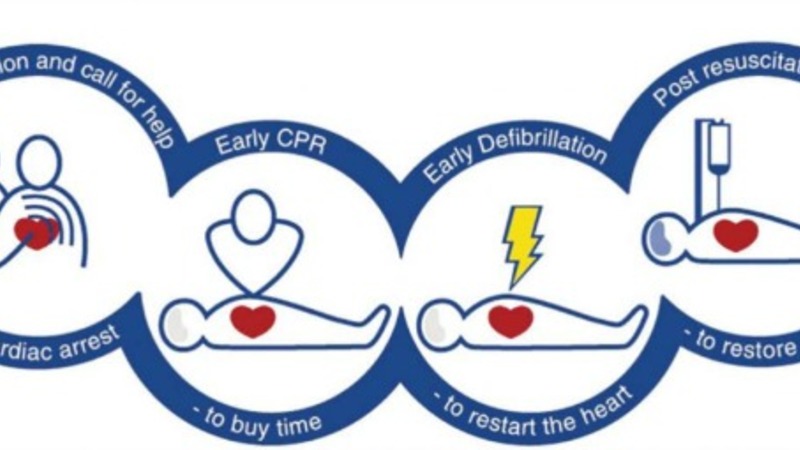New Lease of Life for Return of Spontaneous Circulation - by Paramedic Matt Green PG Dip BSc (Hons) Cert HE MCPara M.L.Green@Live.co.uk @MLG1611 This post was first published on the @prehospitalecg sitehttp://www.prehospital.wordpress.com
The United Kingdom’s ambulance services are successfully restoring a pulse in more cardiac arrest victims than ever before and it’s a huge cause for celebration. The root cause appears to be improvements in the quality of cardiopulmonary resuscitation using non-technical skills such as pit-crew resuscitation tactics and increasingly appropriate use of advanced techniques including airway management and clinically effective doses of evidence-based drugs. Studies are collecting currently data about some of these technical issues to enhance the literature.
Today, it is argued that most patients are receiving similarly skilled resuscitation inside and outside of the hospital environment and that’s a great credit to a paramedic profession barely two decades old.
Moreover, patients who are successfully resuscitated are going on to benefit from extremely effective alternative care pathways which bypass traditional delays associated with emergency department admission to reach definitive care sooner. Patients with acute myocardial infarction may directly access primary percutaneous coronary intervention (PPCI), for example.
2013’s Joint Royal College Ambulance Liaison Committee (JRCALC) Clinical Practice Guidelines for return of spontaneous circulation (ROSC) encourage clinicians to:
- assess the victim using an Airway, Breathing, Circulation, Disability and Expose/Examine approach
- Provide controlled oxygenation and ventilation
- Acquire a 12-lead electrocardiogram
- Undertake investigations
- Treat the precipitating cause
- Provide temperature control
- Provide therapeutic hypothermia only with appropriate equipment
Whilst patients displaying ROSC in a hospital setting have traditionally benefitted from sedation and inotropes where indicated10, this has been outside of the traditional scope of practice for ambulance staff in the United Kingdom. It is uncertain whether this paucity of skills has precipitated further cardiac arrests and resulted in poorer outcomes in the recently resuscitated population.
Things are set to change as a result of the 2015 Resuscitation Council (UK) (RCUK) Prehospital resuscitation guidelines, which have more detailed and specific advice on pre-hospital return of spontaneous circulation.
Key recommendations:
- Continuous capnography
- Saline boluses in the hypotensive patient
- Cardioversion of pulsed ventricular tachycardia causing instability
- Intravenous adrenaline boluses for profound hypotension, titrated to effect (in the context of governance where telephone medical support is available)
- Transport to a primary percutaneous coronary intervention-capable hospital, regardless of consciousness level, where ST segment elevation is detected
- Mechanical ventilation targeted to normal oxygen saturations and capnography values
- Intravenous diazepam or midazolam for those cerebrally irritated or combative (with appropriate telephone medical support if advanced medical care is not available on scene)
- Transporting the patient supine with their head at a 300 tilt
It is yet to be seen how closely the latest edition of the JRCALC Clinical Practice Guidelines, due in March 2016, will reflect the RCUK’s position. Hopefully it is accepted in full and used as a springboard to support a significant shift forward in paramedic ROSC care. Any unwelcome hesitation by JRCALC should be unlikely against a context of excellent quality and specific pre-hospital recommendations released as recently as 2015 from a seminal organisation such as RCUK.
References:
- Cardiac Arrest Annual Report 2010/11 (2011), London Ambulance Service NHS Trust,http://www.google.co.uk/url?sa=t&rct=j&q=&esrc=s&source=web&cd=6&cad=rja&uact=8&ved=0ahUKEwjao_r1jIHLAhVBWSwKHbpFBLMQFghFMAU&url=http%3A%2F%2Fwww.londonambulance.nhs.uk%2Fabout_us%2Fidoc.ashx%3Fdocid%3Db77b0219-5446-4136-ac0a-f936af6e1989%26version%3D-1&usg=AFQjCNFYUUaIcqou6xMGfqEGwLhRxv9esQ
- Cardiac Arrest Annual Report 2014/15, (2015), London Ambulance Service NHS Trust,http://www.google.co.uk/url?sa=t&rct=j&q=&esrc=s&source=web&cd=5&cad=rja&uact=8&ved=0ahUKEwjao_r1jIHLAhVBWSwKHbpFBLMQFghAMAQ&url=http%3A%2F%2Fwww.londonambulance.nhs.uk%2Fabout_us%2Fidoc.ashx%3Fdocid%3D2d51ac9a-bd44-4cc4-9443-946533911275%26version%3D-1&usg=AFQjCNFFjbebJmwJWu26nB1nqNnSALiNHw
- Survivors 2015, South East Coast Ambulance Service NHS Foundation Trust,http://www.secamb.nhs.uk/about_us/our_successes-1.aspx
- Team approach to resuscitation (2015), Resuscitation Today, http://www.google.co.uk/url?sa=t&rct=j&q=&esrc=s&source=web&cd=9&cad=rja&uact=8&ved=0ahUKEwjb1q2fj4HLAhVLhSwKHXQXBWoQFghVMAg&url=http%3A%2F%2Fwww.resustoday.com%2Fwp-content%2Fuploads%2F2015%2F07%2F34519_Resus_Today_Summer_2015_V3_WEB.pdf&usg=AFQjCNGTZHJOlZ02FRWuWYLTTArHFYBGmw&bvm=bv.114733917,d.bGg
- Airways-2 trial (2015), University of Bristol, http://www.airways-2.bristol.ac.uk/
- PARAMEDIC2 trial (2016), Warwick Medical School,http://www2.warwick.ac.uk/fac/med/research/hscience/ctu/trials/critical/paramedic2/
- Treat cardiac arrest patients at the scene, says top doctor (2014), Independent,http://www.independent.co.uk/life-style/health-and-families/health-news/treat-heart-attack-patients-at-the-scene-says-top-doctor-9751659.html
- Resuscitation Policy (2014), South Central Ambulance Service NHS Foundation Trust, bit.ly/1Qbyzyc
- Clinical Practice Guidelines (2013), Joint Royal Colleges Ambulance Liaison Committee,http://www.jrcalc.org.uk/guidelines/
- Post-resuscitation care (2015), Resuscitation Council (UK), https://www.resus.org.uk/resuscitation-guidelines/post-resuscitation-care/
- Prehosital resuscitation (2015), Resuscitation Council (UK), https://www.resus.org.uk/resuscitation-guidelines/prehospital-resuscitation-care/
